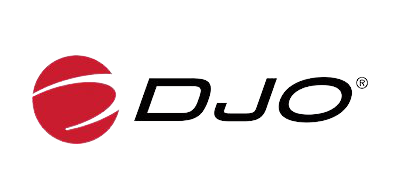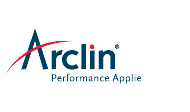Report Summary
Summary
Soy products are made of soybean. They are a substitute for dairy-based milk and milk products such as cheese, flavored milk, yogurt, and spreads. Soy products act as a substitute for meat products and are best suited for vegan consumers. Soy processing needs the correct amount of moisture, temperature, and time, and correct processing helps in providing a pure soybean end-product. De-hulling soybeans renders a better-quality soy than non-dehulled soy.
During 2017, the whole soy foods segment accounted for the major shares of the soy foods market. The rising popularity of whole soy food products such as edamame, tofu, soy milk, and soy nuts will contribute to the growth of this industry segment in the coming years.
According to this market research report, supermarkets and hypermarkets accounted for the maximum shares of the soy food market during 2017. Factors such as the growth of the organized retail sector and the availability of various soy-based brands and products, increase the preference of customers towards supermarkets and hypermarkets. Moreover, the increasing shelf space for alternative dairy brands and products and the growing manufacturer partnerships with distribution partners to sell their products in supermarkets, will also boost the sales of soy foods through this distribution channel.
The global Soy Foods market was xx million US$ in 2020 and is expected to xx million US$ by the end of 2027, growing at a CAGR of xx% between 2021 and 2027.
This report studies the Soy Foods market size (value and volume) by players, regions, product types and end industries, history data 2017-2020 and forecast data 2021-2027; This report also studies the global market competition landscape, market drivers and trends, opportunities and challenges, risks and entry barriers, sales channels, distributors and Porter's Five Forces Analysis.
Geographically, this report is segmented into several key regions, with sales, revenue, market share and growth Rate of Soy Foods in these regions, from 2017 to 2027, covering
North America (United States, Canada and Mexico)
Europe (Germany, UK, France, Italy, Russia and Turkey etc.)
Asia-Pacific (China, Japan, Korea, India, Australia, Indonesia, Thailand, Philippines, Malaysia and Vietnam)
South America (Brazil etc.)
Middle East and Africa (Egypt and GCC Countries)
The various contributors involved in the value chain of the product include manufacturers, suppliers, distributors, intermediaries, and customers. The key manufacturers in this market include
Archer Daniels Midland
Cargill
Hain Celestial
DuPont
Eden Foods
WhiteWave Foods
Blue Diamond Growers
Dean Foods
Freedom Food Group
Northern Soy
Pacific Foods
SunOpta
By the product type, the market is primarily split into
Whole Soy Foods
Soy Oil
Other
By the end users/application, this report covers the following segments
Supermarkets and Hypermarkets
Health Food Stores
Convenience Stores
Online Retailers
We can also provide the customized separate regional or country-level reports, for the following regions:
North America
United States
Canada
Mexico
Asia-Pacific
China
India
Japan
South Korea
Australia
Indonesia
Singapore
Malaysia
Philippines
Thailand
Vietnam
Rest of Asia-Pacific
Europe
Germany
France
UK
Italy
Spain
Russia
Rest of Europe
Central & South America
Brazil
Rest of Central & South America
Middle East & Africa
GCC Countries
Turkey
Egypt
South Africa
Rest of Middle East & Africa
The study objectives of this report are:
To study and analyze the global Soy Foods market size (value & volume) by company, key regions/countries, products and application, history data from 2017 to 2020, and forecast to 2027.
To understand the structure of Soy Foods market by identifying its various subsegments.
To share detailed information about the key factors influencing the growth of the market (growth potential, opportunities, drivers, industry-specific challenges and risks).
Focuses on the key global Soy Foods manufacturers, to define, describe and analyze the sales volume, value, market share, market competition landscape, SWOT analysis and development plans in next few years.
To analyze the Soy Foods with respect to individual growth trends, future prospects, and their contribution to the total market.
To project the value and volume of Soy Foods submarkets, with respect to key regions (along with their respective key countries).
To analyze competitive developments such as expansions, agreements, new product launches, and acquisitions in the market.
To strategically profile the key players and comprehensively analyze their growth strategies.
In this study, the years considered to estimate the market size of Soy Foods are as follows:
History Year: 2017-2020
Base Year: 2020
Estimated Year: 2020
Forecast Year 2021 to 2027
This report includes the estimation of market size for value (million USD) and volume (K MT). Both top-down and bottom-up approaches have been used to estimate and validate the market size of Soy Foods market, to estimate the size of various other dependent submarkets in the overall market. Key players in the market have been identified through secondary research, and their market shares have been determined through primary and secondary research. All percentage shares, splits, and breakdowns have been determined using secondary sources and verified primary sources.
For the data information by region, company, type and application, 2020 is considered as the base year. Whenever data information was unavailable for the base year, the prior year has been considered.
Key Stakeholders
Raw material suppliers
Distributors/traders/wholesalers/suppliers
Regulatory bodies, including government agencies and NGO
Commercial research & development (R&D) institutions
Importers and exporters
Government organizations, research organizations, and consulting firms
Trade associations and industry bodies
End-use industries
Available Customizations
With the given market data, EternityInsights offers customizations according to the company's specific needs. The following customization options are available for the report:
Further breakdown of Soy Foods market on basis of the key contributing countries.
Detailed analysis and profiling of additional market players.
Table Of Contents
Table of Contents
1 Soy Foods Market Overview
1.1 Soy Foods Product Overview
1.2 Soy Foods Market Segment by Type
1.2.1 Whole Soy Foods
1.2.2 Soy Oil
1.2.3 Other
1.3 Global Soy Foods Market Size by Type
1.3.1 Global Soy Foods Sales and Growth by Type
1.3.2 Global Soy Foods Sales and Market Share by Type (2017-2020)
1.3.3 Global Soy Foods Revenue and Market Share by Type (2017-2020)
1.3.4 Global Soy Foods Price by Type (2017-2020)
2 Global Soy Foods Market Competition by Company
2.1 Global Soy Foods Sales and Market Share by Company (2017-2020)
2.2 Global Soy Foods Revenue and Share by Company (2017-2020)
2.3 Global Soy Foods Price by Company (2017-2020)
2.4 Global Top Players Soy Foods Manufacturing Base Distribution, Sales Area, Product Types
2.5 Soy Foods Market Competitive Situation and Trends
2.5.1 Soy Foods Market Concentration Rate
2.5.2 Global Soy Foods Market Share of Top 5 and Top 10 Players
2.5.3 Mergers & Acquisitions, Expansion
3 Soy Foods Company Profiles and Sales Data
3.1 Archer Daniels Midland
3.1.1 Company Basic Information, Manufacturing Base and Competitors
3.1.2 Soy Foods Product Category, Application and Specification
3.1.3 Archer Daniels Midland Soy Foods Sales, Revenue, Price and Gross Margin(2017-2020)
3.1.4 Main Business Overview
3.2 Cargill
3.2.1 Company Basic Information, Manufacturing Base and Competitors
3.2.2 Soy Foods Product Category, Application and Specification
3.2.3 Cargill Soy Foods Sales, Revenue, Price and Gross Margin(2017-2020)
3.2.4 Main Business Overview
3.3 Hain Celestial
3.3.1 Company Basic Information, Manufacturing Base and Competitors
3.3.2 Soy Foods Product Category, Application and Specification
3.3.3 Hain Celestial Soy Foods Sales, Revenue, Price and Gross Margin(2017-2020)
3.3.4 Main Business Overview
3.4 DuPont
3.4.1 Company Basic Information, Manufacturing Base and Competitors
3.4.2 Soy Foods Product Category, Application and Specification
3.4.3 DuPont Soy Foods Sales, Revenue, Price and Gross Margin(2017-2020)
3.4.4 Main Business Overview
3.5 Eden Foods
3.5.1 Company Basic Information, Manufacturing Base and Competitors
3.5.2 Soy Foods Product Category, Application and Specification
3.5.3 Eden Foods Soy Foods Sales, Revenue, Price and Gross Margin(2017-2020)
3.5.4 Main Business Overview
3.6 WhiteWave Foods
3.6.1 Company Basic Information, Manufacturing Base and Competitors
3.6.2 Soy Foods Product Category, Application and Specification
3.6.3 WhiteWave Foods Soy Foods Sales, Revenue, Price and Gross Margin(2017-2020)
3.6.4 Main Business Overview
3.7 Blue Diamond Growers
3.7.1 Company Basic Information, Manufacturing Base and Competitors
3.7.2 Soy Foods Product Category, Application and Specification
3.7.3 Blue Diamond Growers Soy Foods Sales, Revenue, Price and Gross Margin(2017-2020)
3.7.4 Main Business Overview
3.8 Dean Foods
3.8.1 Company Basic Information, Manufacturing Base and Competitors
3.8.2 Soy Foods Product Category, Application and Specification
3.8.3 Dean Foods Soy Foods Sales, Revenue, Price and Gross Margin(2017-2020)
3.8.4 Main Business Overview
3.9 Freedom Food Group
3.9.1 Company Basic Information, Manufacturing Base and Competitors
3.9.2 Soy Foods Product Category, Application and Specification
3.9.3 Freedom Food Group Soy Foods Sales, Revenue, Price and Gross Margin(2017-2020)
3.9.4 Main Business Overview
3.10 Northern Soy
3.10.1 Company Basic Information, Manufacturing Base and Competitors
3.10.2 Soy Foods Product Category, Application and Specification
3.10.3 Northern Soy Soy Foods Sales, Revenue, Price and Gross Margin(2017-2020)
3.10.4 Main Business Overview
3.11 Pacific Foods
3.12 SunOpta
4 Soy Foods Market Status and Outlook by Regions
4.1 Global Market Status and Outlook by Regions
4.1.1 Global Soy Foods Market Size and CAGR by Regions
4.1.2 North America
4.1.3 Asia-Pacific
4.1.4 Europe
4.1.5 South America
4.1.6 Middle East and Africa
4.2 Global Soy Foods Sales and Revenue by Regions
4.2.1 Global Soy Foods Sales and Market Share by Regions (2017-2020)
4.2.2 Global Soy Foods Revenue and Market Share by Regions (2017-2020)
4.2.3 Global Soy Foods Sales, Revenue, Price and Gross Margin (2017-2020)
4.3 North America Soy Foods Sales, Revenue, Price and Gross Margin
4.3.1 United States
4.3.2 Canada
4.3.3 Mexico
4.4 Europe Soy Foods Sales, Revenue, Price and Gross Margin
4.4.1 Germany
4.4.2 UK
4.4.3 France
4.4.4 Italy
4.4.5 Russia
4.4.6 Turkey
4.5 Asia-Pacific Soy Foods Sales, Revenue, Price and Gross Margin
4.5.1 China
4.5.2 Japan
4.5.3 Korea
4.5.4 Southeast Asia
4.5.4.1 Indonesia
4.5.4.2 Thailand
4.5.4.3 Malaysia
4.5.4.4 Philippines
4.5.4.5 Vietnam
4.5.5 India
4.5.6 Australia
4.6 South America Soy Foods Sales, Revenue, Price and Gross Margin
4.6.1 Brazil
4.7 Middle East and Africa Soy Foods Sales, Revenue, Price and Gross Margin
4.7.1 Egypt
4.7.2 GCC Countries
5 Soy Foods Application/End Users
5.1 Soy Foods Segment by Application
5.1.1 Supermarkets and Hypermarkets
5.1.2 Health Food Stores
5.1.3 Convenience Stores
5.1.4 Online Retailers
5.2 Global Soy Foods Product Segment by Application
5.2.1 Global Soy Foods Sales by Application
5.2.2 Global Soy Foods Sales and Market Share by Application (2017-2020)
6 Global Soy Foods Market Forecast
6.1 Global Soy Foods Sales, Revenue Forecast (2021-2027)
6.1.1 Global Soy Foods Sales and Growth Rate Forecast (2021-2027)
6.1.1 Global Soy Foods Revenue and Growth Rate Forecast (2021-2027)
6.2 Global Soy Foods Forecast by Regions
6.2.1 North America Soy Foods Sales and Revenue Forecast (2021-2027)
6.2.2 Europe Soy Foods Sales and Revenue Forecast (2021-2027)
6.2.3 Asia-Pacific Soy Foods Sales and Revenue Forecast (2021-2027)
6.2.3.1 China
6.2.3.2 Japan
6.2.3.3 Korea
6.2.3.4 Southeast Asia
6.2.3.5 India
6.2.3.6 Australia
6.2.4 South America Soy Foods Sales and Revenue Forecast (2021-2027)
6.2.5 Middle East and Africa Soy Foods Sales and Revenue Forecast (2021-2027)
6.2.5.1 Egypt
6.2.5.2 GCC Countries
6.3 Soy Foods Forecast by Type
6.3.1 Global Soy Foods Sales and Revenue Forecast by Type (2021-2027)
6.3.2 Whole Soy Foods Gowth Forecast
6.3.3 Soy Oil Gowth Forecast
6.4 Soy Foods Forecast by Application
6.4.1 Global Soy Foods Sales Forecast by Application (2021-2027)
6.4.2 Global Soy Foods Forecast in Supermarkets and Hypermarkets
6.4.3 Global Soy Foods Forecast in Health Food Stores
7 Soy Foods Upstream Raw Materials
7.1 Soy Foods Key Raw Materials
7.1.1 Key Raw Materials
7.1.2 Key Raw Materials Price
7.1.3 Raw Materials Key Suppliers
7.2 Manufacturing Cost Structure
7.2.1 Raw Materials
7.2.2 Labor Cost
7.2.3 Manufacturing Expenses
7.3 Soy Foods Industrial Chain Analysis
8 Marketing Strategy Analysis, Distributors
8.1 Marketing Channel
8.1.1 Direct Marketing
8.1.2 Indirect Marketing
8.1.3 Marketing Channel Development Trend
8.2 Distributors
8.3 Downstream Customers
9 Research Findings and Conclusion
Appendix
Methodology/Research Approach
Research Programs/Design
Market Size Estimation
Market Breakdown and Data Triangulation
Data Source
Secondary Sources
Primary Sources
Disclaimer












